Art & Exhibitions
Salvador Dalí’s Rarely Seen Floral Works Blossom in a New Show
"Reimagining Nature" brings together the Surrealist's floral suites for the first time in two decades.

Salvador Dalí’s oeuvre was never just made up of ants, eggs, spiders, and melting clocks painted against dreamy, sometimes nightmarish, landscapes. In his later years, the Surrealist turned his hand to a surprising subject: florals.
Beginning in the late ’60s, Dalí created three series—1968’s “Flora Dalínae (FlorDalí),” 1969’s FlorDalí (Les Fruits),” and 1972’s “Florals (Surrealist Flowers)”—that put a whimsical spin on botanical studies. Quite literally: he would draw his own otherworldly fruits and flowers onto illustrations by 19th-century botanists Pierre-Joseph Redouté and Pierre Antoine Poiteau, before populating the pieces with his beloved motifs such as keys and clocks. The illusionary effect is a delightful one.
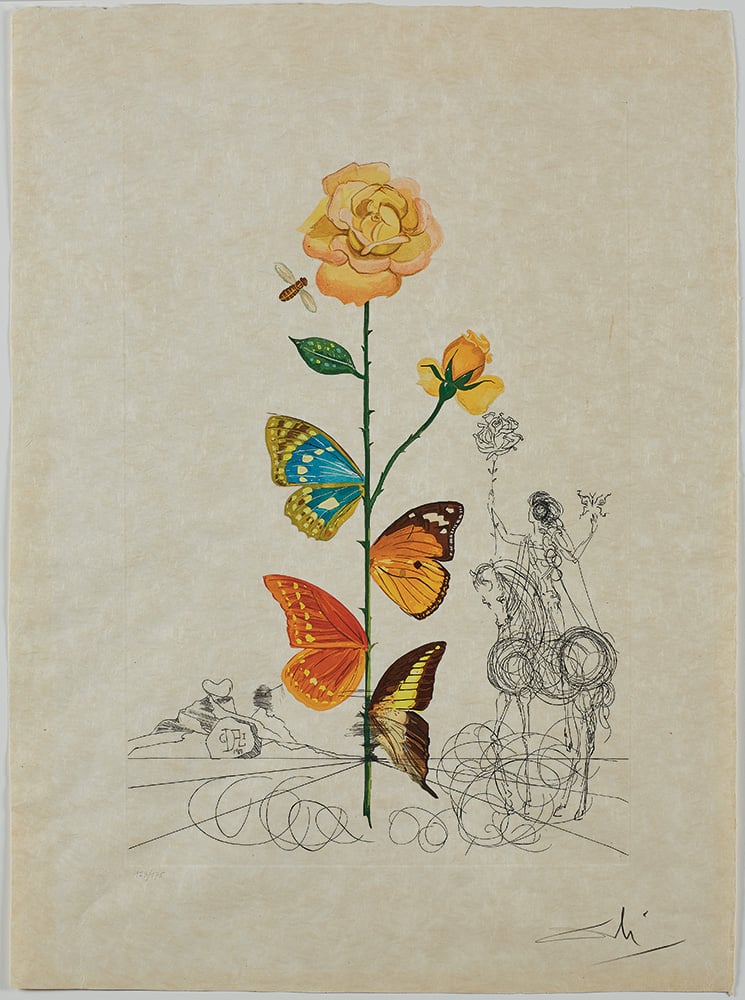
Salvador Dalí, Rose (Rosa papilio), from “Flora Dalínae (FlorDalí)” (1968). Collection of The Dalí Museum, St. Petersburg, © Salvador Dalí. Fundació Gala-Salvador Dalí (Artists Rights Society), 2024; Photo: © Joseph Siciliano USA, 2019.
For the first time in 20 years, the Dalí Museum in St. Petersburg, Florida, is bringing together these three suites in an exhibition titled “Reimagining Nature: Dalí’s Floral Fantasies.” Accompanying the drawings are other artworks and archival material in which Dalí’s interest in flowers can be located.
“Dalí’s long-standing fascination with botanical evolution profoundly influenced his achievements as one of the great 20th-century masters of illusionism,” said curator Peter Tush in a statement. “For him, nature was a source of not only beauty, but also of his singular approach to visual transformation.”
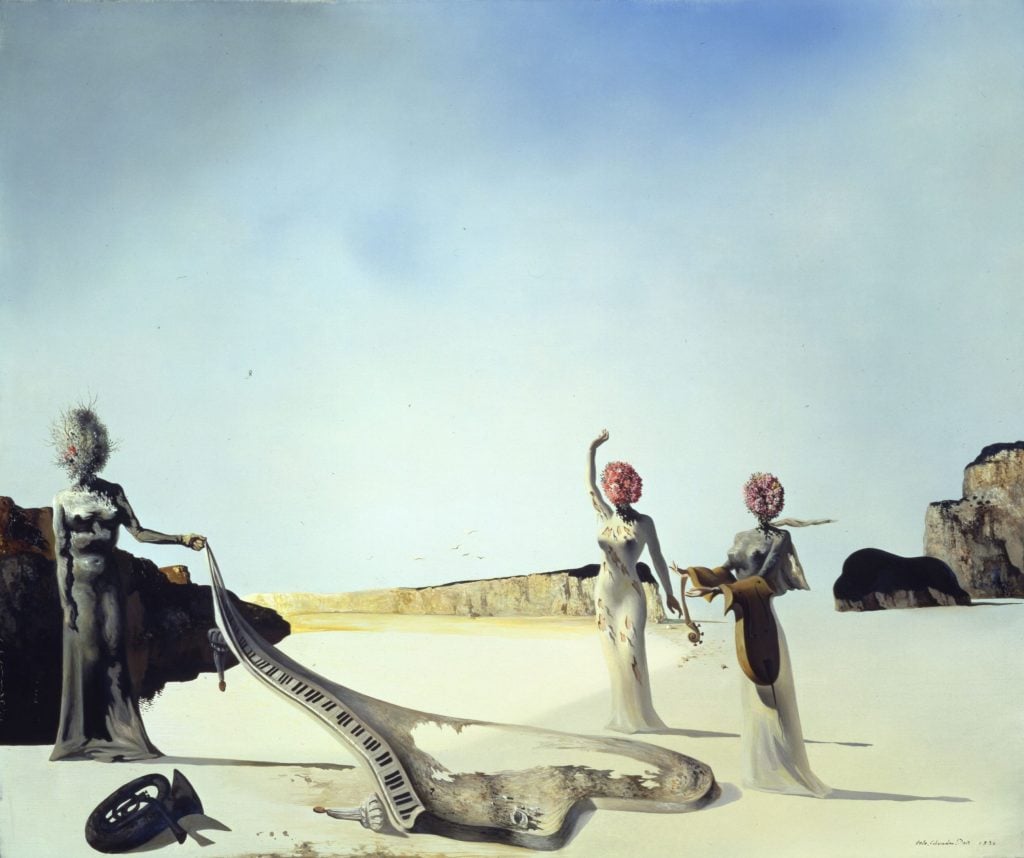
Salvador Dalí, Three Young Surrealist Women Holding in Their Arms the Skins of an Orchestra (1936). Collection of The Dalí Museum; ©Salvador Dalí. Fundació Gala-Salvador Dalí (Artists Rights Society), 2024.
While not a focus, botany has indeed shown up in Dalí’s earlier works. Three Young Surrealist Women Holding in Their Arms the Skins of an Orchestra (1936) and Anatomies (1937) feature figures with flowers for heads, later echoed in the female forms on his June 1939 cover for Vogue. In 1958, his Meditative Rose would bring a psychological tension (Dalí was a Freud fanboy) to a surprisingly realistic depiction of the titular bloom.
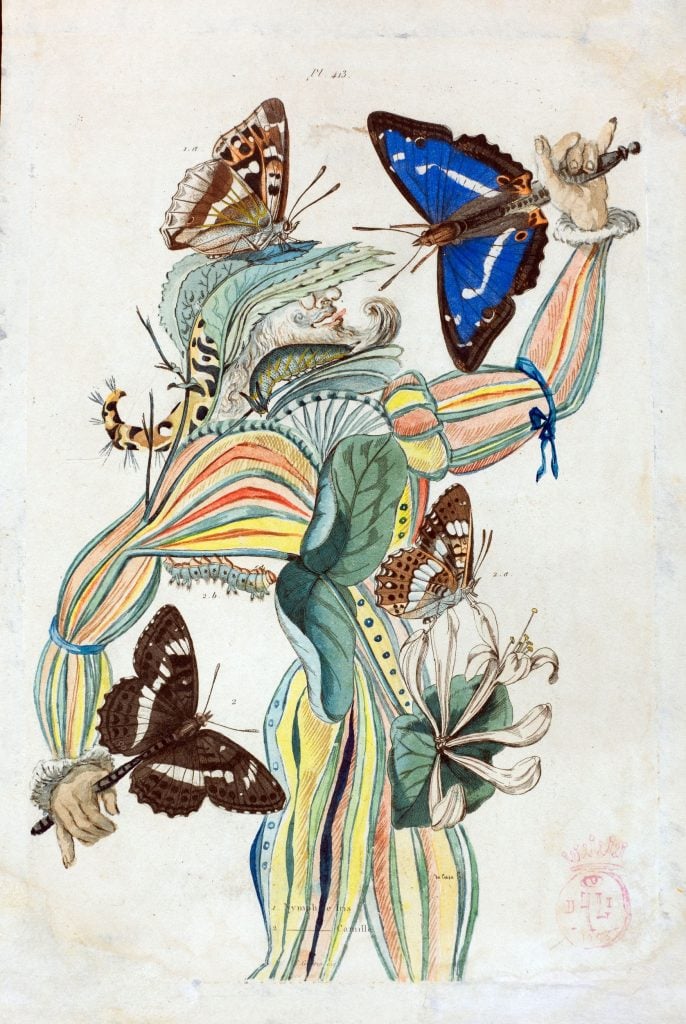
Salvador Dalí, Illustration for “Tres Picos” (1955). Collection of The Dalí Museum; ©Salvador Dalí. Fundació Gala-Salvador Dalí (Artists Rights Society), 2024.
The artist’s fascination with botany can of course be traced to his Surrealist approach, in his Dalían attempt to explode the standard field of vision by leveraging dreams and metamorphosis. “I see the human form in trees, leaves, animals. I see animal and vegetal characteristics in humans,” he once said. “Human beings create and change. When they sleep, they change totally—into flowers, plants, trees.”
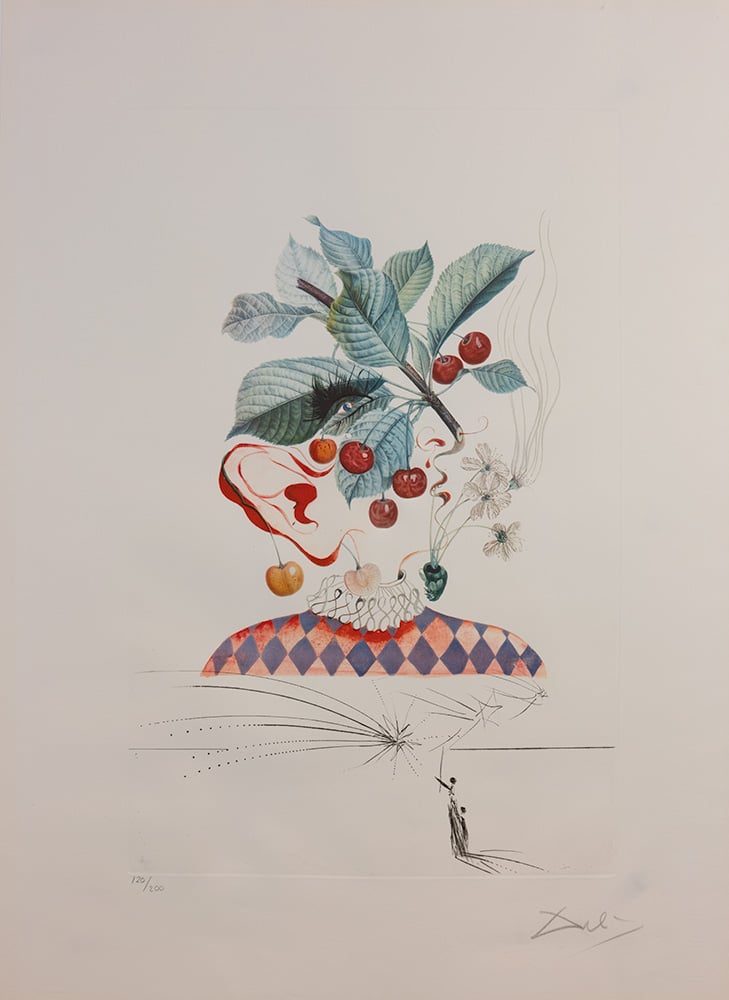
Salvador Dalí, Cerises Pierrot, from “FlorDalí (Les Fruits)” (1969). Collection of The Dalí Museum; ©Salvador Dalí. Fundació Gala-Salvador Dalí (Artists Rights Society), 2024; Photo: © David Deranian, 2023.
But the museum also noted that Dalí’s floral series emerged at the height of Pop art, after he grew acquainted with Andy Warhol (who sat the Surrealist down for a screen test). His botanical creations don’t just reflect the movement’s bold colors and provocative energies, but its techniques, marking Dalí’s growing foray into printmaking.
“Dalí’s botanical series,” said Hank Hine, the museum’s executive director, present “a Surrealist collage to make a new phylum of beings, a new species of perception. Dalí seems to predict the marvels of genetic engineering, pressing the boundaries of what is imaginable and inspiring new ways of seeing the world.”
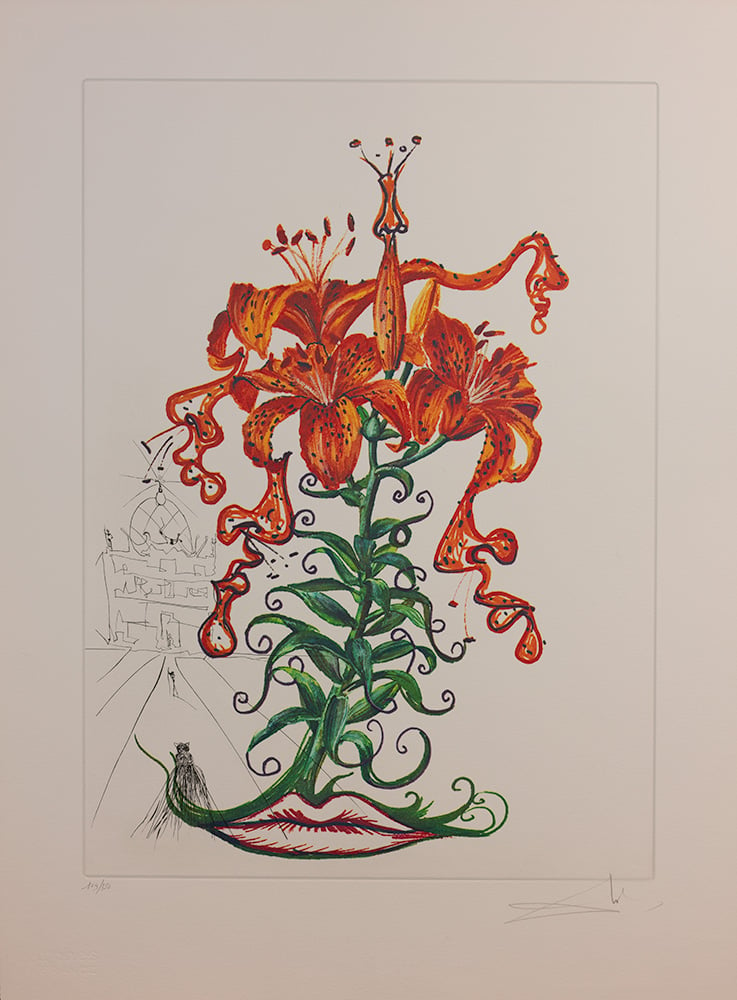
Salvador Dalí, Tiger Lilies and Mustache, from “Florals (Surrealist Flowers)” (1972). Collection of The Dalí Museum; ©Salvador Dalí. Fundació Gala-Salvador Dalí (Artists Rights Society), 2024; Photo: © David Deranian, 2023.
“Reimagining Nature” arrives as Surrealism celebrates its first century. The occasion is also being marked by the major exhibition “Imagine! 100 Years of International Surrealism” at the Royal Museums of Fine Arts of Belgium (later traveling to the Centre Pompidou in Paris), as well as retrospectives on artists including Remedios Varo, Lee Miller, and Dora Maar.
“Reimagining Nature: Dalí’s Floral Fantasies” is on view at the Dalí Museum, One Dali Blvd., St. Petersburg, Florida, through October 20.





